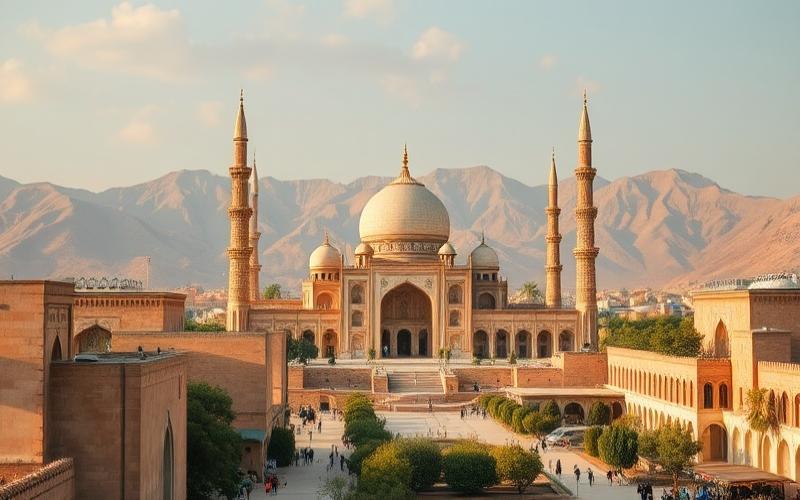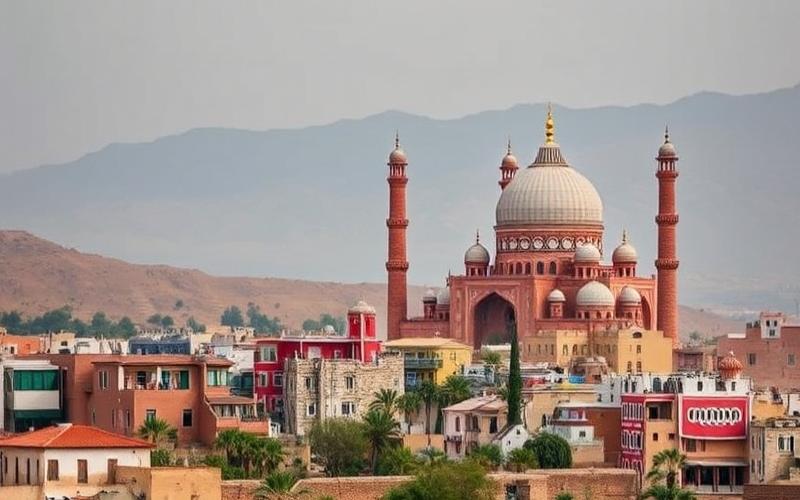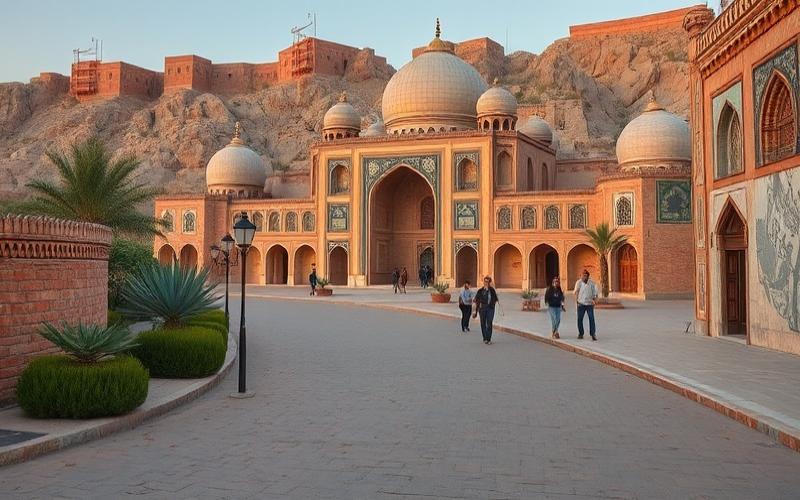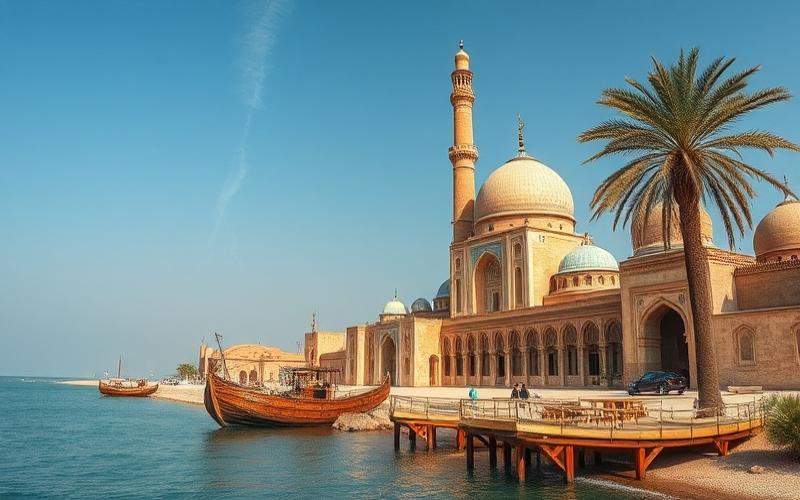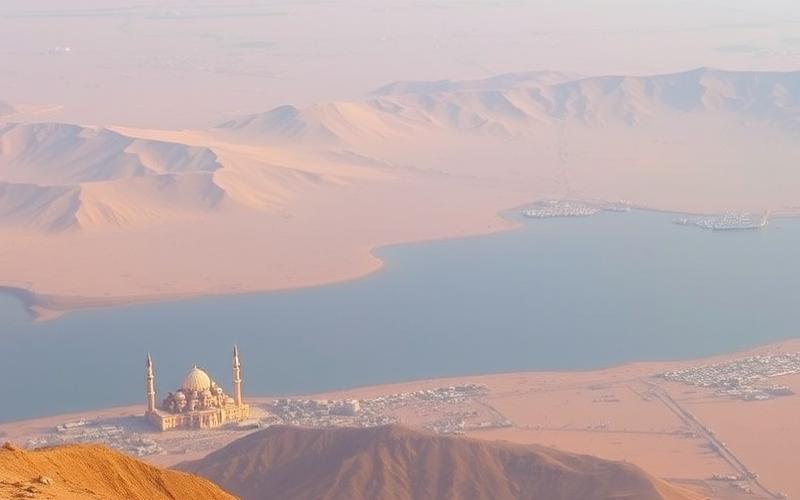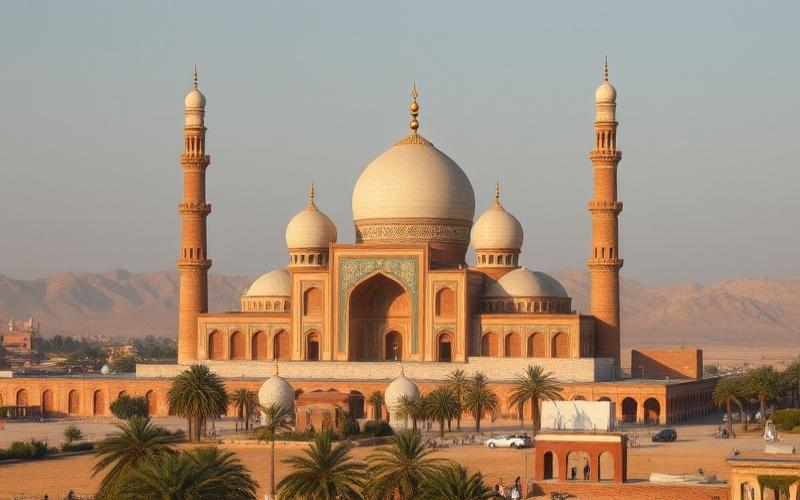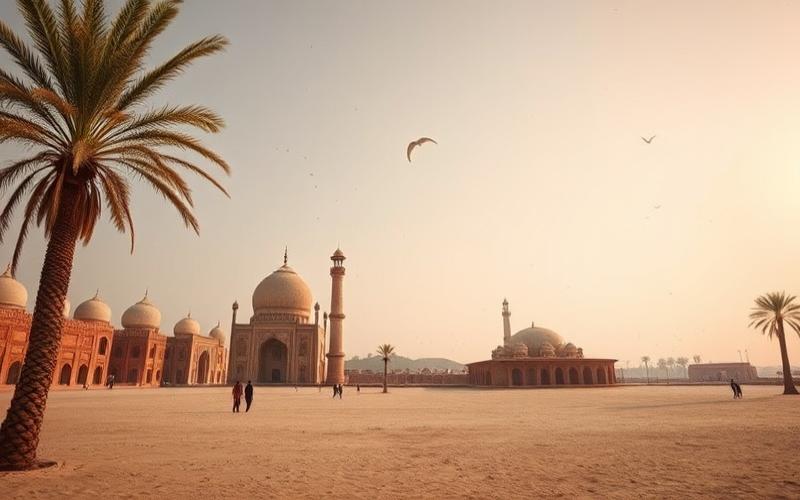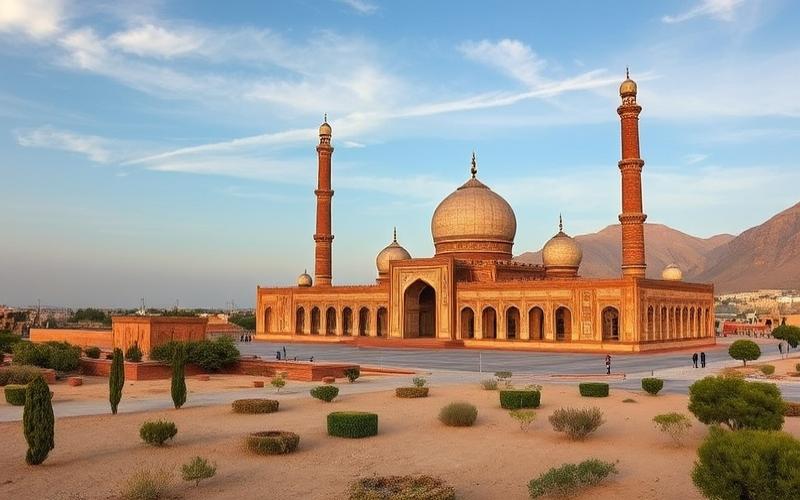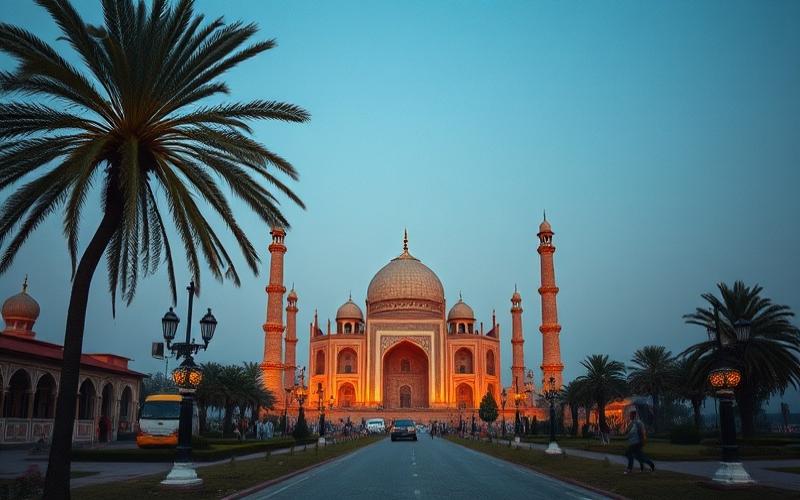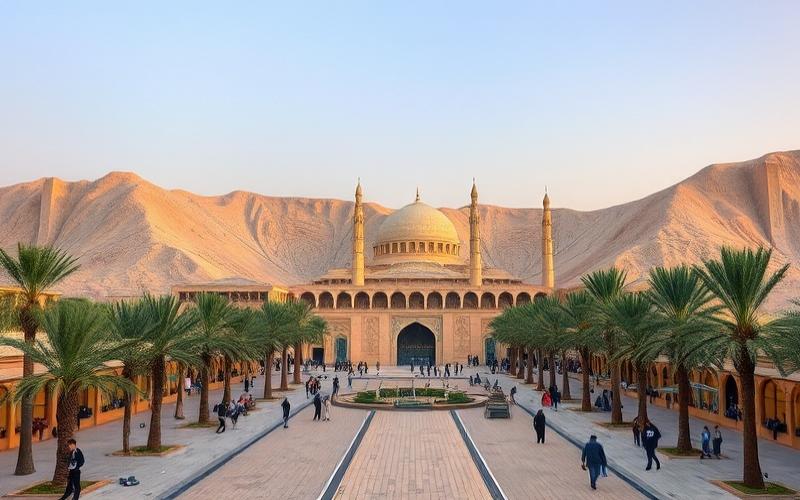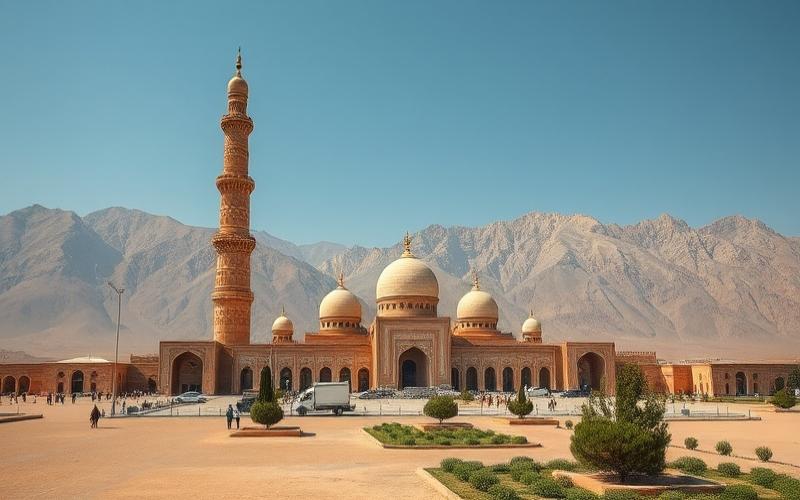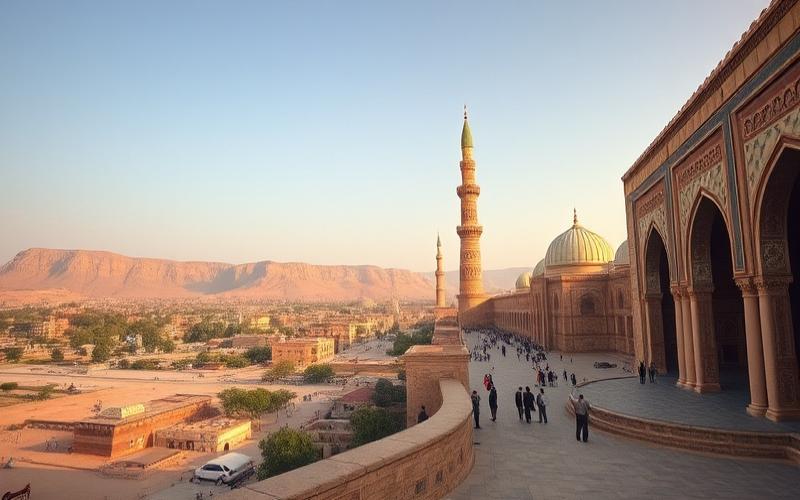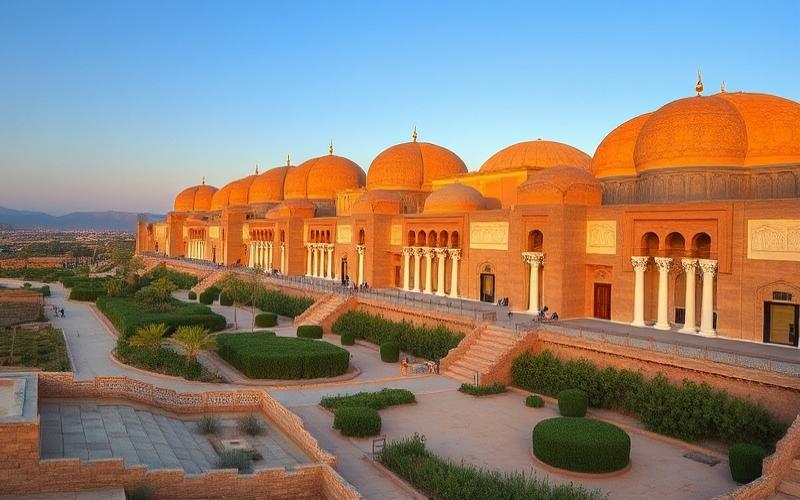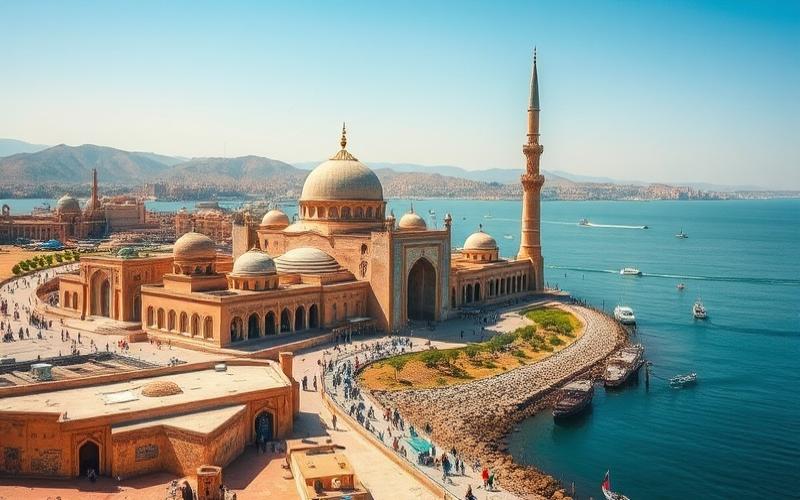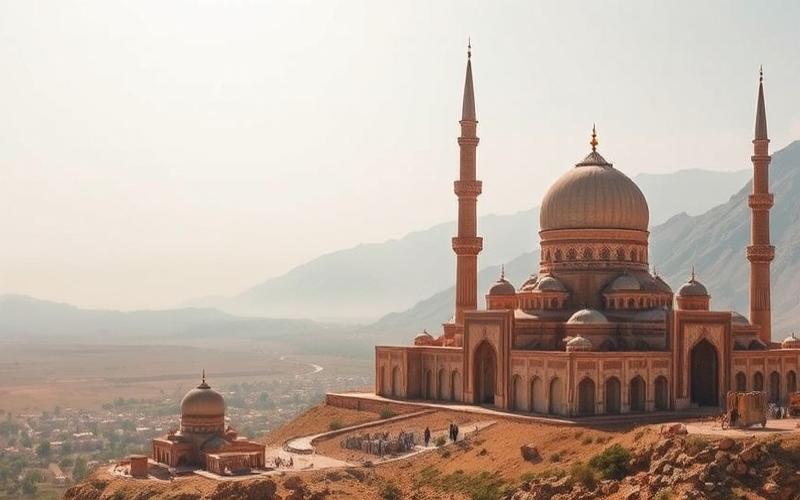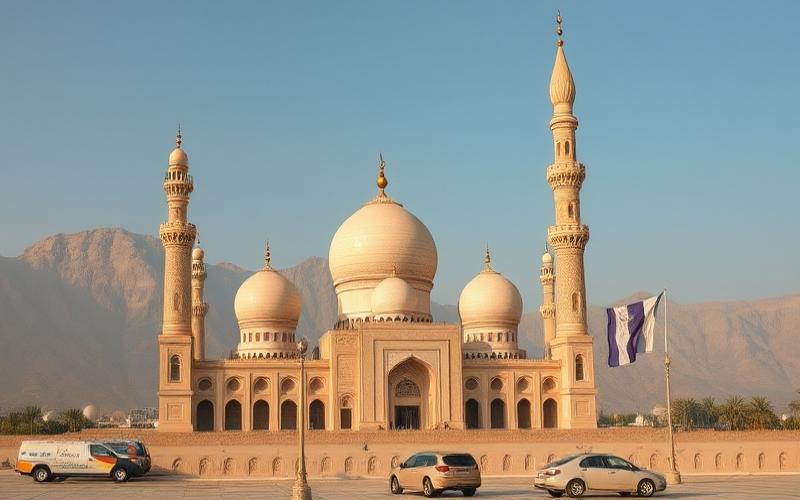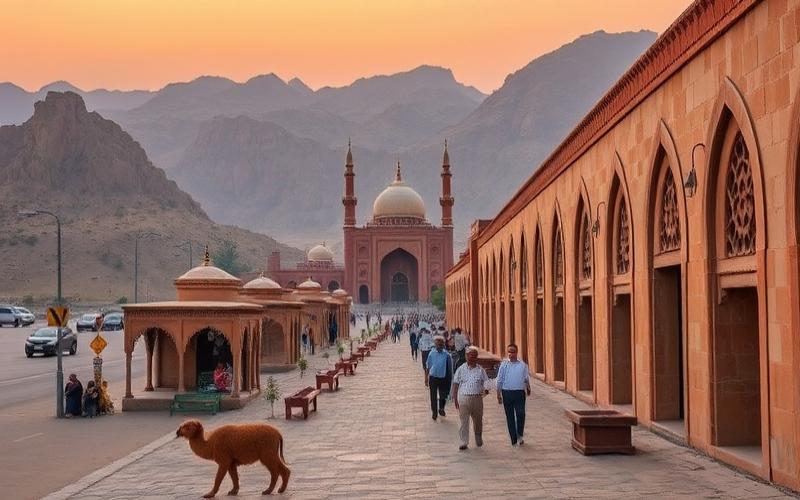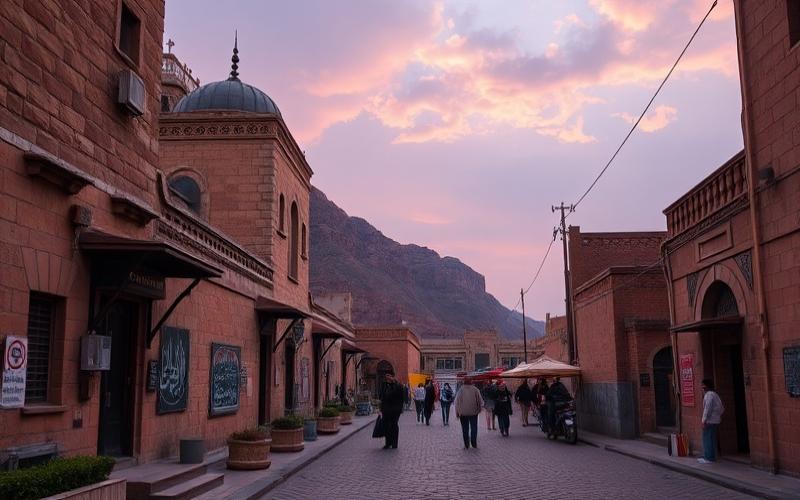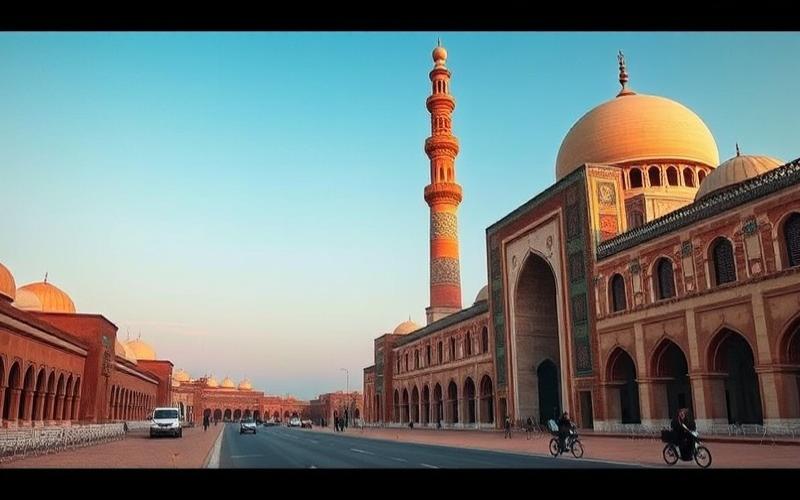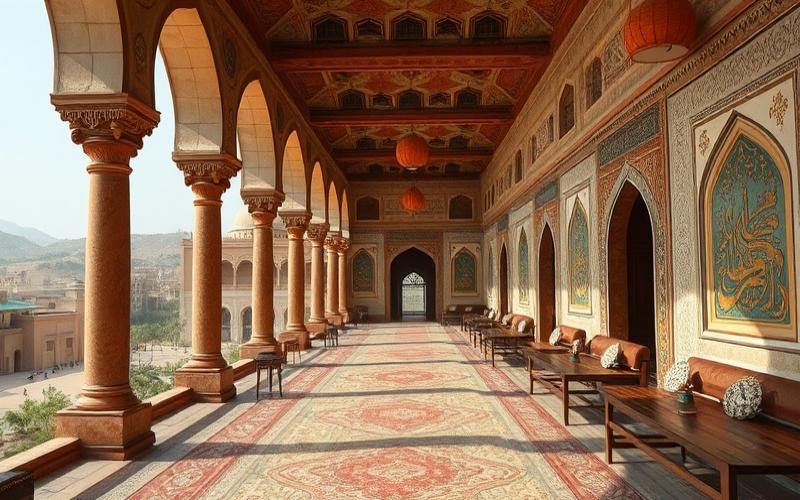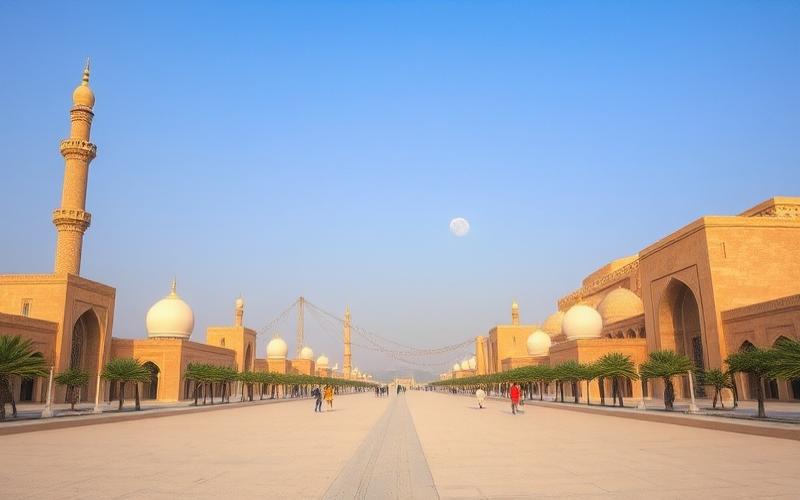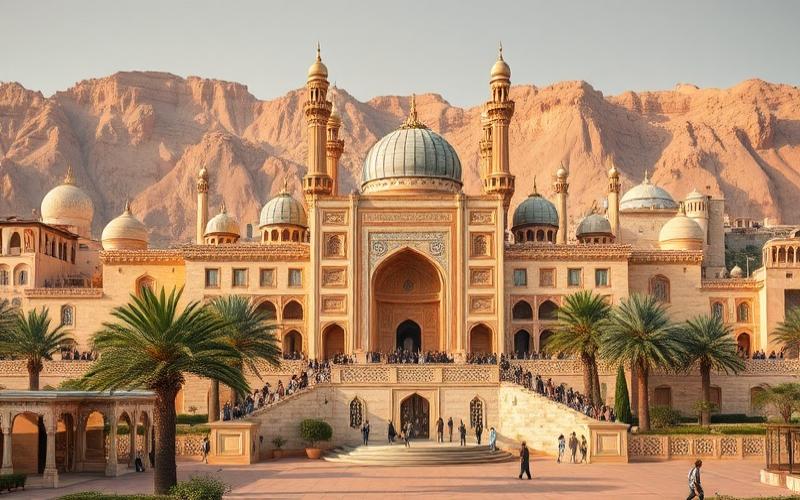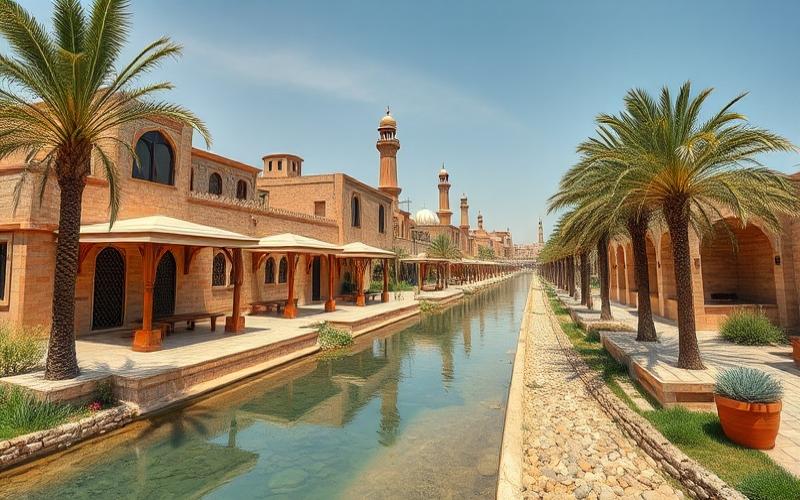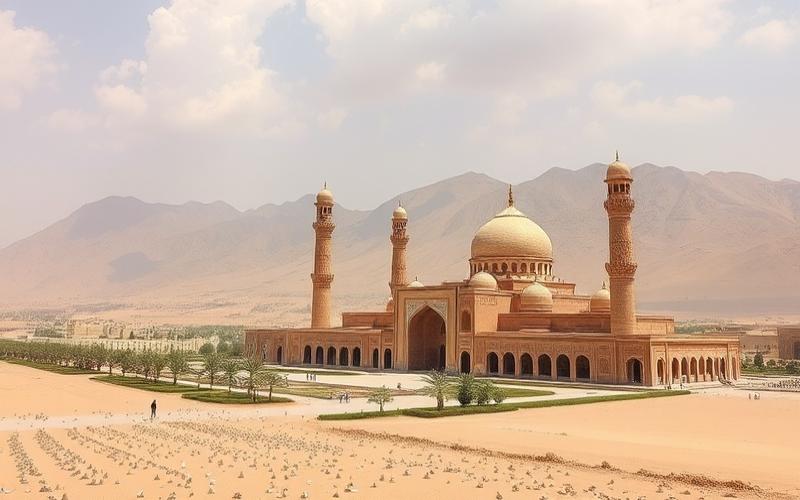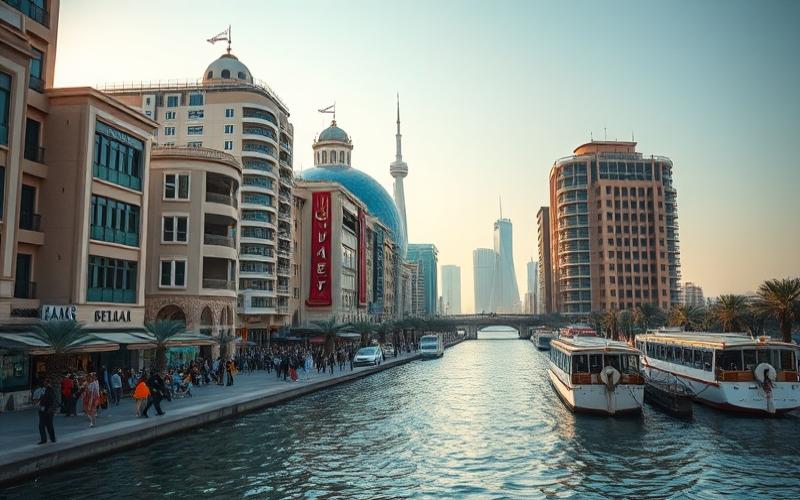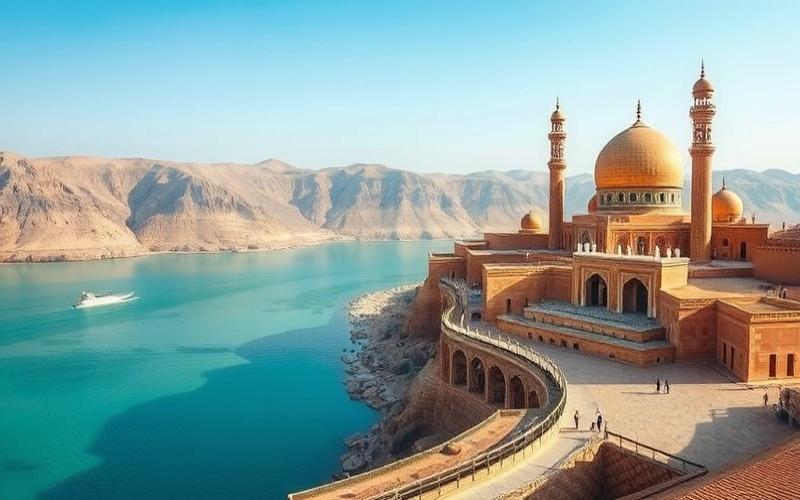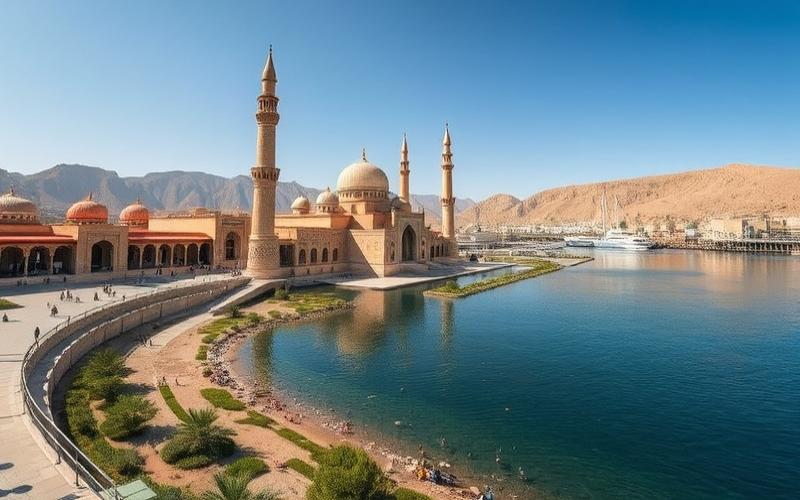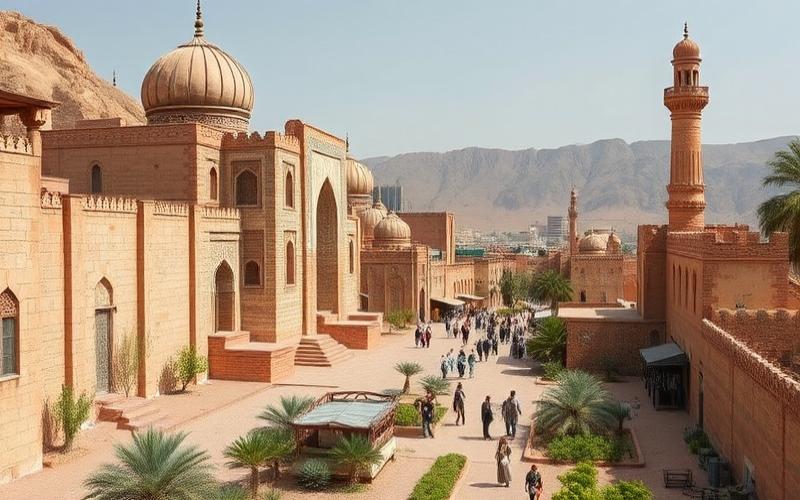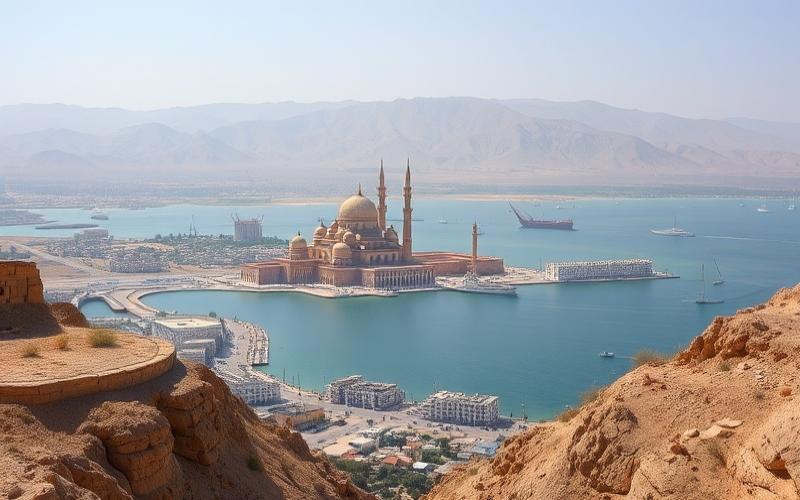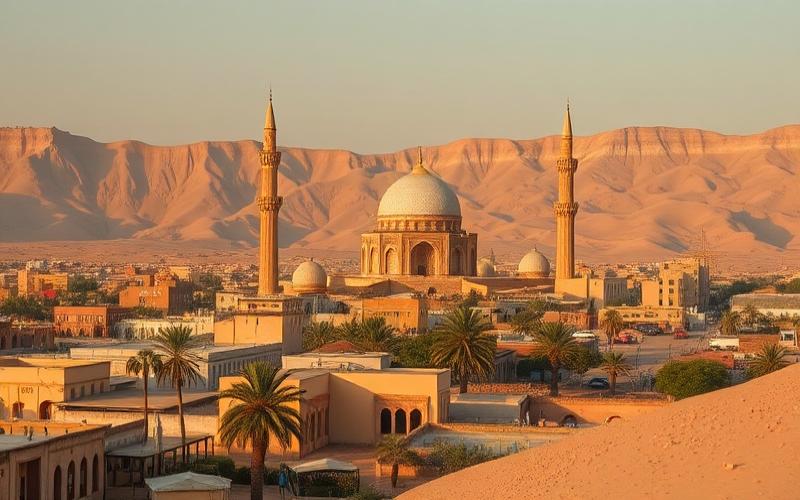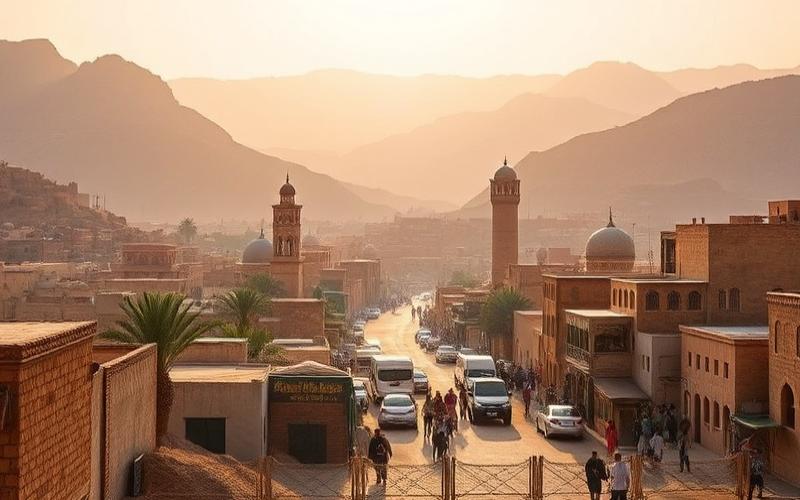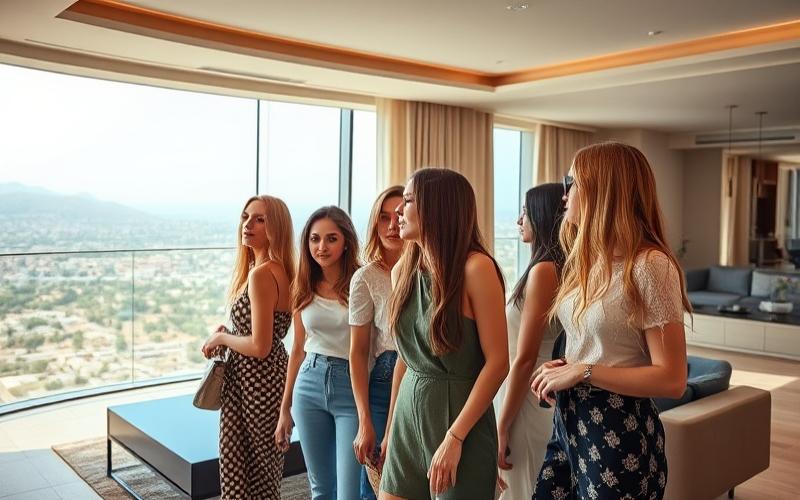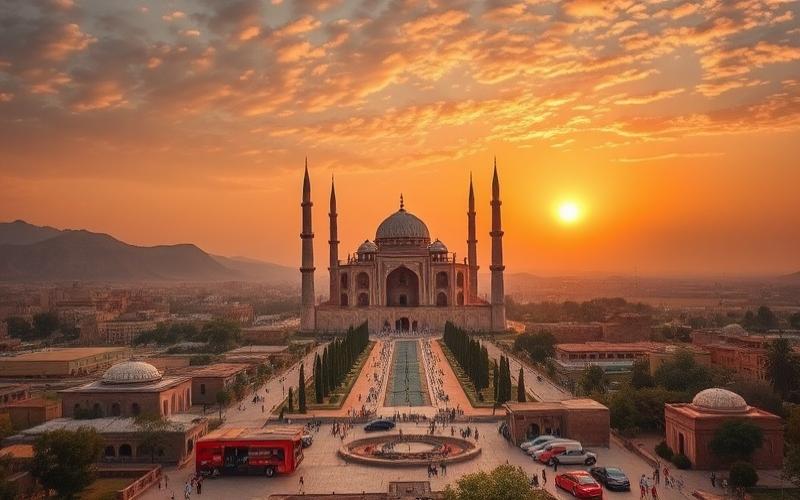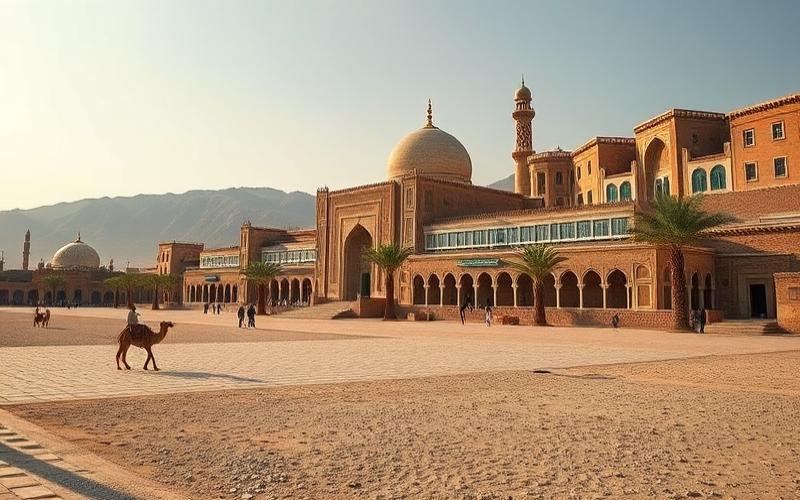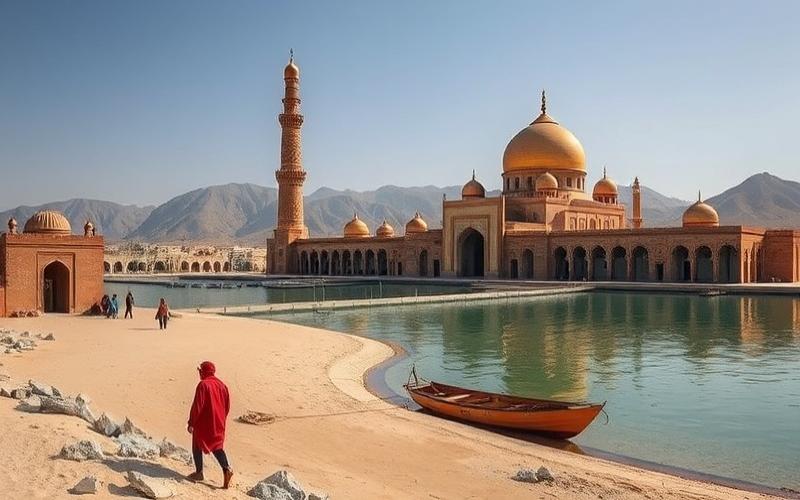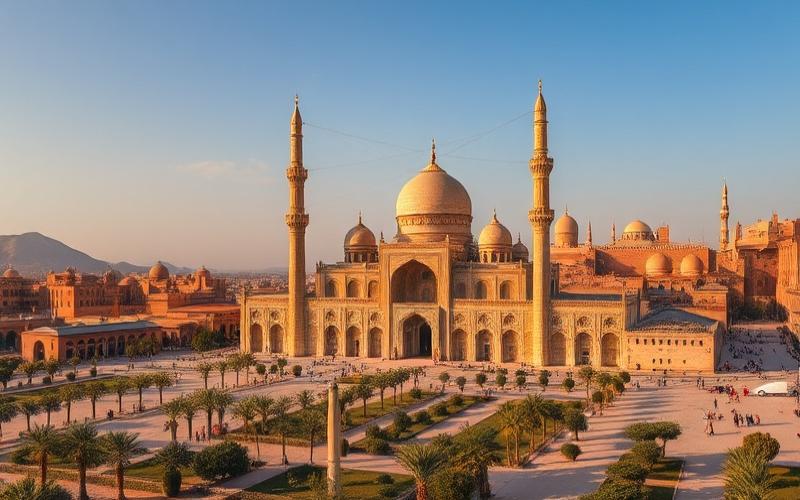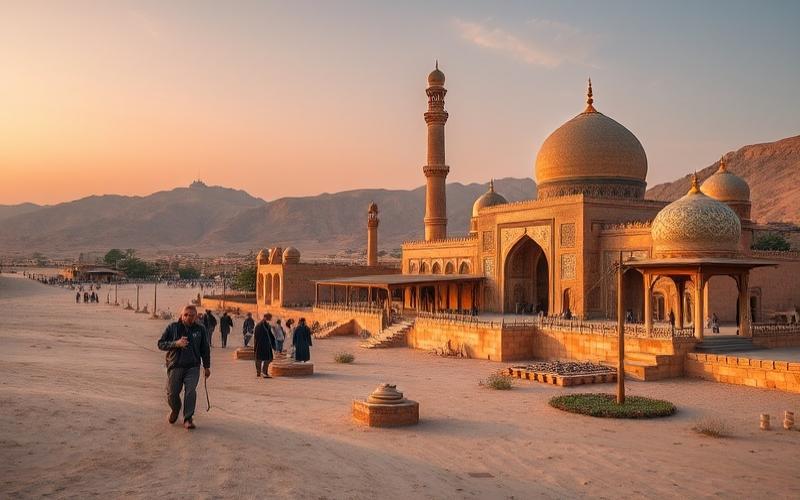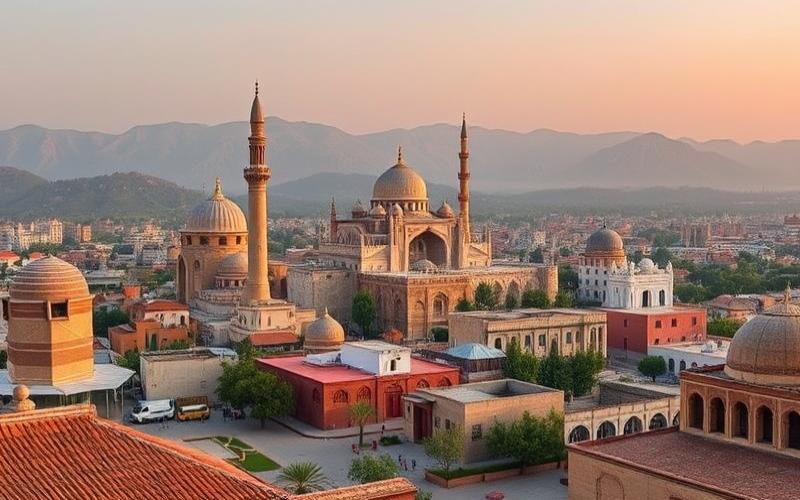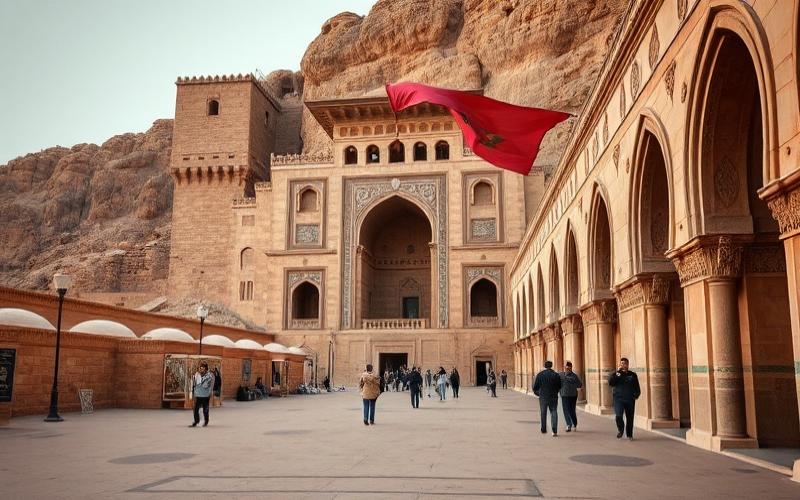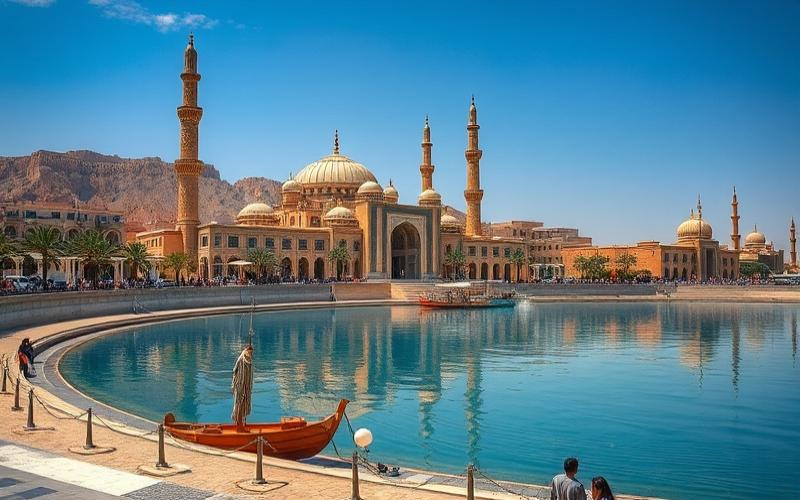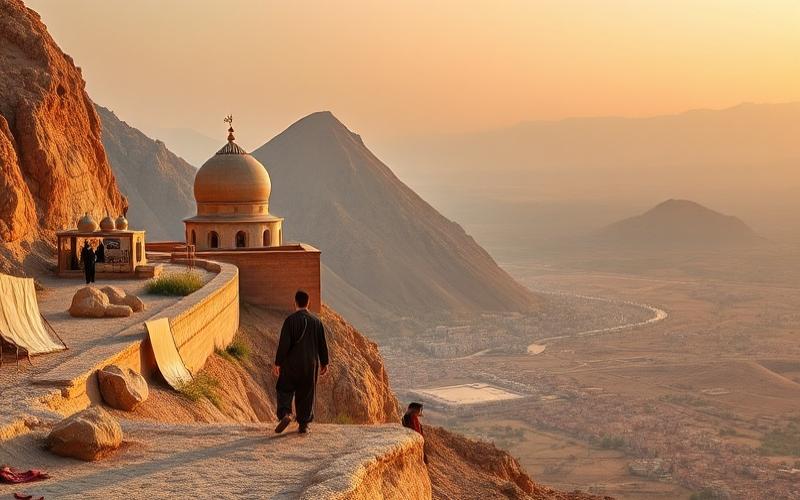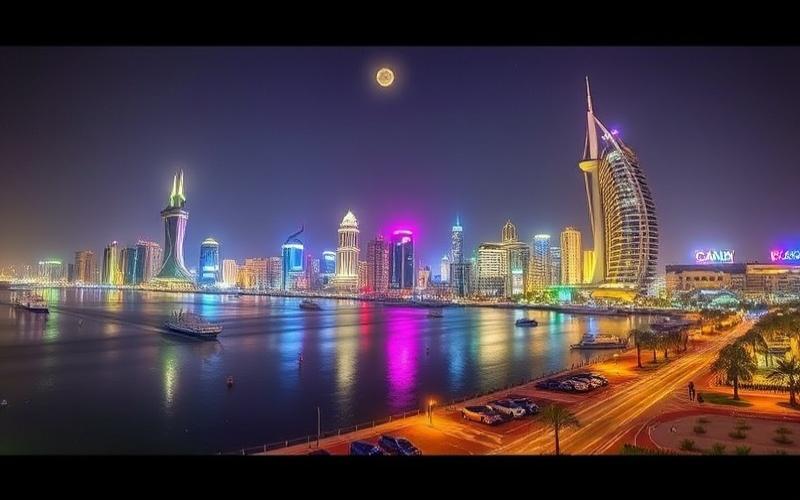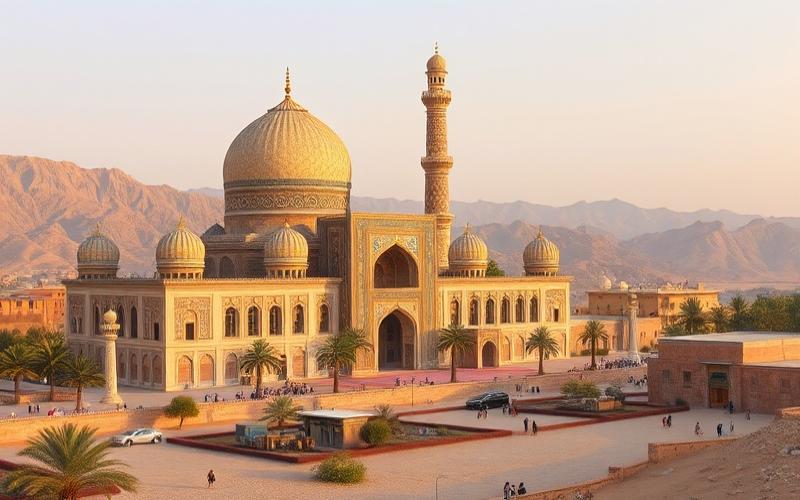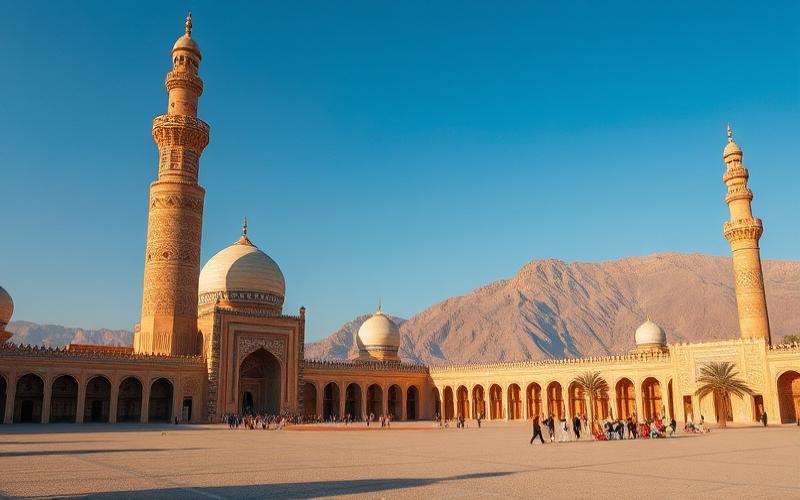
 Published on and written by Cyril Jarnias
Published on and written by Cyril Jarnias
Bahrain: A Dynamic Archipelago in Transformation
Bahrain, a dynamic archipelago at the heart of the Persian Gulf, is undergoing significant transformation with the announcement of new urban development projects that promise to reshape the country’s economic and social landscape.
Facing a growing population and a desire to attract international investment, the kingdom is implementing a series of bold initiatives focused on:
- Infrastructure expansion
- Technological innovation
- Environmental sustainability
Ambitious Projects for a Sustainable Future
Through ambitious projects such as new modern residential neighborhoods, sophisticated business centers, and renewed green spaces, Bahrain is positioning itself as one of the regional leaders in integrated urban development.
These initiatives address contemporary challenges while preserving the kingdom’s rich cultural heritage.
Good to Know:
Bahrain combines modernity and tradition in its urban projects, with particular attention paid to sustainable development and quality of life.
Overview of Urban Planning Projects in Bahrain
Overview of Major Urban Planning Projects in Bahrain
The Kingdom of Bahrain is undergoing a major urban transformation, guided by Vision 2030 which places sustainability, infrastructure improvement, and quality of life at the heart of public policies.
Main Objectives:
- Modernize and expand infrastructure (roads, networks, energy)
- Promote sustainable development (land management, green spaces)
- Improve quality of life and residential attractiveness
- Support economic growth and sectoral diversification
Main Areas Affected:
- Manama (the capital), with new residential neighborhoods, urban renewal projects, and the creation of new business hubs
- Five artificial islands under development for urban and tourism expansion
- Extension of transportation networks and infrastructure throughout the kingdom
Concrete Project Examples:
| Project | Description | Location | Investment | Timeline/Forecast |
|---|---|---|---|---|
| Five Artificial Islands | Residential, commercial, and tourism development; creation of green spaces and modern infrastructure | Bahrain Coastline | Approximately $30 billion USD (for all 22 major projects) | 2030 Horizon |
| New Residential Neighborhoods and Shopping Centers | Urban fabric expansion, integration of affordable and high-end housing, development of services and leisure | Manama, urban outskirts | Included in overall investments | 2025-2030 |
| Green Spaces and Urban Parks | Creation of parks and pedestrian zones to improve the urban environment | Main cities, new neighborhoods | Not specified | Ongoing/Planned |
Main Companies and Agencies Involved:
- Urban Planning and Development Authority (UPDA)
- Ministry of Public Works and Urban Planning
- National and international private investors (via events like Cityscape Bahrain)
- International urban planning and engineering consulting firms
Key Quantitative Data:
- $30 billion USD total investment for 22 major infrastructure projects
- Deployment of digital platforms to centralize and accelerate urban planning
- Staggered delivery targets until 2030, in line with the National Vision
Potential Impacts on Economy and Society:
- Job creation in construction, real estate, services, and tourism
- Increased attractiveness for foreign investors
- Improved living environment (mobility, green spaces, air quality)
- Strengthened social cohesion through increased accessibility to services and infrastructure
The ongoing urban planning projects in Bahrain embody a sustainable, ambitious, and structured urbanization strategy centered around innovation, resident well-being, and economic dynamism.
Specific examples: new residential neighborhoods in Manama, development of artificial islands for housing and tourism, creation of new shopping centers and urban parks, modernization of road networks and public services.
Good to Know:
Urban planning projects in Bahrain aim to transform key areas such as Manama and Al Muharraq, with particular emphasis on infrastructure improvement and sustainable development. Initiatives like the Diyar Al Muharraq residential neighborhood project, supported by investments exceeding $2 billion, illustrate this commitment. The King Hamad Causeway, an ambitious transportation project, is expected to reduce travel time between Bahrain and Saudi Arabia, thus facilitating trade and tourism. Projects also include the development of new green spaces and shopping centers, including the Avenues Mall, which will enhance quality of life. Local and international companies, in close collaboration with the government, are participating in these projects, with completion expected by 2030. These initiatives are expected to boost Bahrain’s economy, creating thousands of jobs and increasing GDP through an influx of tourists and expatriates attracted by a modernized living environment.
Real Estate Metamorphosis: Flagship Projects in Action
Innovative and Ambitious Urban Projects in Bahrain
Bahrain is experiencing a remarkable acceleration of transformative urban projects, combining public and private initiatives to reshape the urban landscape with a sustainable, inclusive, and technological approach.
Concrete Examples of Innovative Projects:
- Redevelopment of Key Neighborhoods:
- Improvement of Public Parks and Green Spaces: Development of new parks, modernization of waterfront promenades, beautification of main streets.
- Renovation of the Historic Market (Flea Market): Conversion of the site closed in 2020 into a green nursery to support urban biodiversity.
- Next-Generation Residential Complexes:
- East Sitra Housing Town: Integration of modern public green spaces within an exemplary new residential neighborhood.
- Technology Parks & Smart Cities:
- Digital Real Estate Platform “Aqari”: Smart centralization of national real estate data to optimize urban planning.
- Annual organization of the Bahrain Smart Cities Summit bringing together innovations around AI, IoT, smart mobility, and sustainable construction.
| Project / Initiative | Sector | Progress | Expected Impacts |
|---|---|---|---|
| Parks & Green Spaces | Public | Ongoing/Completed | Improved quality of life; greater climate resilience; increased tourist attractiveness |
| Flea Market Green Nursery | Public | Initial Phase | Support for local biodiversity; urban brownfield conversion |
| East Sitra Housing Town | Residential | Active Construction | New sustainable housing; social integration |
| “Aqari” Platform | Digital | Operational | Accelerated digitalization of real estate sector |
| Annual Municipal Forum | Public/Private | Launch Planned | Strengthened PPP partnerships; private investment dynamism |
Complementary Structuring Initiatives:
- Creation of a transparent municipal portfolio facilitating private sector involvement in major development projects (green infrastructure, smart services).
- Organization of an annual municipal investment forum promoting citizen participation and public/private synergies.
Economic Implications:
- Economic diversification through enhanced attractiveness (major tourism projects considered like Disney/Universal).
- Optimization of land use through centralized and prioritized management of municipal investments.
Environmental Implications:
- Significant expansion of green spaces contributing to the fight against urban heat islands.
- Systematic adoption of sustainable solutions in new developments (smart water-energy-waste management).
Social Implications:
- Tangible improvement in living environment with easier access to leisure, urban nature, and advanced digital services.
- Strengthening of social fabric through community involvement in decision-making processes.
These transformations fully align with global smart urbanization trends, where technological innovation (smart cities), participatory governance, and sustainable development are placed at the heart of the urban model. Bahrain thus anticipates not only demographic growth but also its regional positioning as an advanced laboratory for future cities.
Good to Know:
In Bahrain, the real estate metamorphosis is booming with innovative projects such as Bahrain Bay, a complex blending commercial, residential, and leisure space, and the Diyar Al Muharraq neighborhood, focused on sustainability. Among the initiatives, the redevelopment of Juffair, equipped with modern infrastructure and urban green spaces, illustrates a push toward environmentally friendly urbanization. The development of Bahrain Financial Harbour strengthens the country’s economic position as a Gulf financial center. Smart technologies are being integrated into new constructions to promote energy efficiency, while the expansion of the Rashid Equestrian and Horseracing Club aims to boost sports tourism. These projects, combining public and private efforts, reflect global sustainable urbanization trends, with their implementation being essential to energize the local economy while meeting current societal and environmental expectations.
Real Estate Market Revolution: Impacts and Perspectives
Analysis of Recent Real Estate Market Trends in Bahrain and Redefinition of the Urban Landscape:
- Expansion of Freehold Areas: New residential communities are opening to foreigners, promoting demographic diversity and rapid urbanization.
- Smart City Projects (e.g., Bahrain Bay): Emphasis on technological integration, urban connectivity, and sustainable development.
- Rise of Mid-Range Apartments, particularly for families from the Gulf Cooperation Council (GCC), responding to increased demand for affordable housing.
- Emergence of Health & Wellness Real Estate as a new dynamic segment, reflecting a shift in urban lifestyles.
| 2025 Trend | Impact on Urban Landscape |
|---|---|
| Expanded Freehold | Increased residential diversification |
| Smart City (Bahrain Bay) | Modernization, innovation |
| Affordable Family Housing | Social inclusion |
| Health/Wellness Real Estate | New specialized urban hubs |
Impacts of Government Policies and Foreign Investments:
- Opening policies accelerate property access for foreign investors, particularly through:
- Administrative simplification
- Clear land rights in certain areas
- Tax exemption on rental income
- The government actively promotes the sector through:
- Social programs like Mazaya Finance targeting affordable housing
- Tax incentives for innovative developers
“The controlled expansion of real estate free zones is an integral part of our national strategy to attract international capital while meeting local needs.”
Recent Regulatory or Legislative Changes Influencing Market Dynamics:
- Since 2016, several laws have been amended to facilitate:
- Foreign access to property outside restricted areas
- Legal security around real estate transactions
- Contractual transparency between developers/residents/investors
- Key Points:
- Expatriates can now purchase more easily
- Maintenance of robust legal protection for all stakeholders
Future Perspectives – Challenges and Opportunities:
Opportunities:
- Attractive returns vs. other GCC countries due to high yield without significant direct taxation.
- Facilitated market access with options from ~€125,000; attractive for both individual investors and institutional developers.
Potential Challenges:
- Small market size = risks related to rapid saturation or sectoral economic dependence.
- Constant need to adapt real estate supply to regional demographic fluctuations.
For Each Stakeholder:
| Stakeholder | Opportunities | Challenges |
|---|---|---|
| Investors | Tax-exempt stable income – Secure market | Possible volatility |
| Developers | Growing demand for mid-range/affordable housing | Regulatory pressure |
| Residents | Greater accessibility – Diversified supply | Possible increase in rental/purchase prices |
Case Study – Illustrative Flagship Projects:
- Bahrain Bay
Iconic Smart City project integrating high-end housing, connected offices, and sustainable public spaces. - Diyar Al Muharraq
Mixed residential neighborhood with modern infrastructure dedicated to local/expatriate families; emphasis on financial accessibility & innovative green spaces.
Bahrain Bay symbolizes a new urban generation where technology, social diversity, and environmental quality converge toward a modern vision adapted to current global expectations.
- Seef District Development
Commercial/residential area hosting international financial centers – key driver for foreign direct investment.
Conclusion – Future Integration/Transformation & Role of Innovation/Technologies:
Legislative changes combined with private sector dynamism are profoundly transforming Bahrain into a regional laboratory for innovative urban planning where legal stability, economic performance, and social inclusion coexist. The growing integration of smart technologies – centralized energy management, digital shared mobility, eco-responsible construction – is already structuring the future city according to a resilient model centered on humans but open to the connected world.
“By combining regulatory flexibility, enhanced international welcome, and continuous technological innovations, Bahrain is establishing itself as a regional pioneer of next-generation urban planning.”
Good to Know:
The real estate market in Bahrain is undergoing rapid transformation, marked by innovative trends and constant urbanization, influenced by favorable government policies and increased foreign investment. Recent legislation, facilitating access for international investors and easing regulations for local developers, contributes to this dynamic. Projects like Dilmunia Island and Bahrain Bay project the image of a modern city integrated with cutting-edge technologies. However, challenges persist, such as sustainable management of infrastructure and resources, requiring harmonization between urban growth and environmental respect. Future perspectives show a potential balance between technological innovation and respect for local traditions, offering opportunities for investors while redefining Bahrain’s sustainable urban vision.
Strategic Investment: Seizing New Opportunities
The planned urban development projects in Bahrain represent major strategic investment opportunities, driven by government policy focused on modernizing infrastructure and diversifying the economy.
Main Government Initiatives
- Development of special economic zones to attract international companies and foster innovation.
- Construction of new residential neighborhoods to meet demographic growth and improve quality of life.
- Launch of large-scale commercial and leisure centers, with the expansion of Bahrain International Airport and the creation of commercial hubs that boost tourism and retail.
- Improvement of urban planning and land development through initiatives like the Bahrain French Town Planning Initiative.
Key Attractive Sectors for Investment
- Construction: strong demand for new urban and residential infrastructure.
- Green Technologies: integration of sustainable solutions in urban planning, smart water and energy management.
- Renewable Energy: public and private projects in solar and wind power, in line with energy transition objectives.
Regulatory Framework and Tax Incentives
- Favorable regulation facilitating business creation and foreign investment.
- Free zones offering tax exemptions on profits, VAT, and customs duties, mainly in special economic zones.
- Public-private partnership (PPP) agreements allowing private investors to participate in major urban infrastructure projects.
- Ongoing fiscal and tax reforms, including the gradual introduction of a corporate tax for local companies and alignment of VAT with regional standards, while maintaining incentives for strategic investors.
Examples of Successful Investments in the Gulf Region
| Project | Country | Sector | Impact |
|---|---|---|---|
| King Abdullah Economic City | Saudi Arabia | Special Economic Zones | Attracts multinationals, job creation |
| Lusail City | Qatar | Urban Development | Residential neighborhoods, business centers, leisure infrastructure |
| Dubai Silicon Oasis | UAE | Technology & Innovation | Start-up incubator, green innovation hub |
Potential Challenges for Investors
- Regulatory Stability: fiscal and legislative evolutions that could affect medium-term profitability.
- Social Acceptability: budgetary reforms (VAT increase, energy price liberalization) likely to generate social tensions.
- Regional Competition: increased competition between Gulf countries to attract the same investment flows.
- Sectoral Risk: partial dependence on oil market conditions and success of economic diversification.
Bahraini government initiatives, combined with an incentive regulatory environment and evolving sectors, make urban development in Bahrain a strategic investment opportunity with high potential, while requiring vigilance regarding the country’s fiscal and social developments.
Good to Know:
Urban development projects in Bahrain offer strategic investment opportunities thanks to ambitious government initiatives that modernize urban infrastructure through special economic zones and new residential neighborhoods. Construction, green technology, and renewable energy sectors are expected to attract investments, supported by a favorable regulatory framework including attractive tax incentives. Public-private partnerships are encouraged to stimulate urban development, while case studies in the Gulf region show interesting financial returns despite potential challenges like bureaucratic complexity. Investors can draw inspiration from similar successes to navigate the specifics of the Bahraini market and maximize their returns.
Disclaimer: The information provided on this website is for informational purposes only and does not constitute financial, legal, or professional advice. We encourage you to consult qualified experts before making any investment, real estate, or expatriation decisions. Although we strive to maintain up-to-date and accurate information, we do not guarantee the completeness, accuracy, or timeliness of the proposed content. As investment and expatriation involve risks, we disclaim any liability for potential losses or damages arising from the use of this site. Your use of this site confirms your acceptance of these terms and your understanding of the associated risks.

